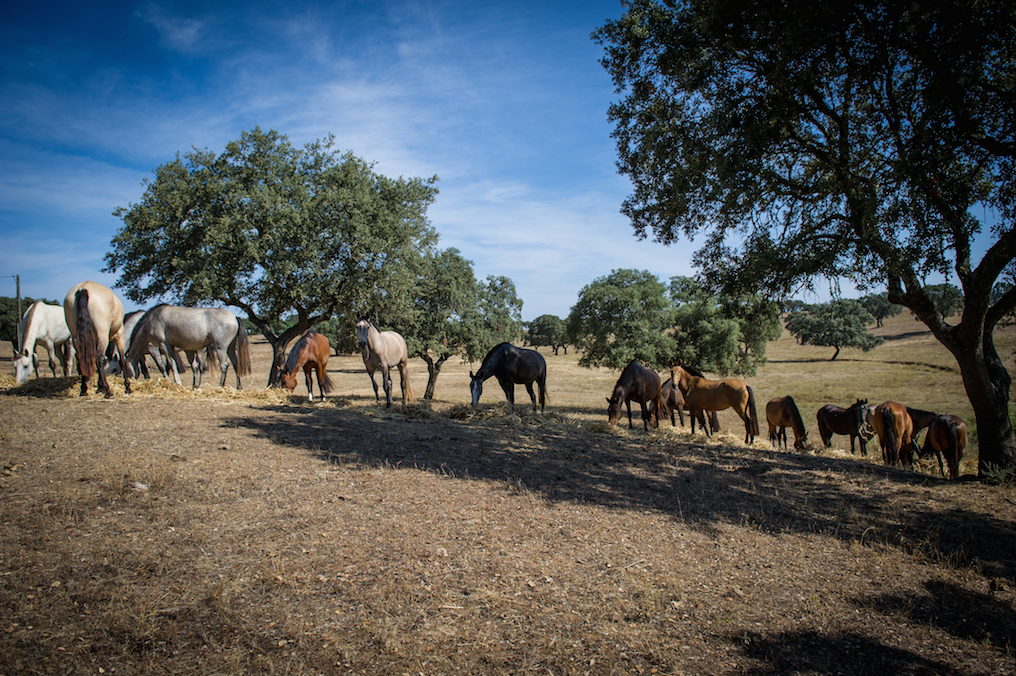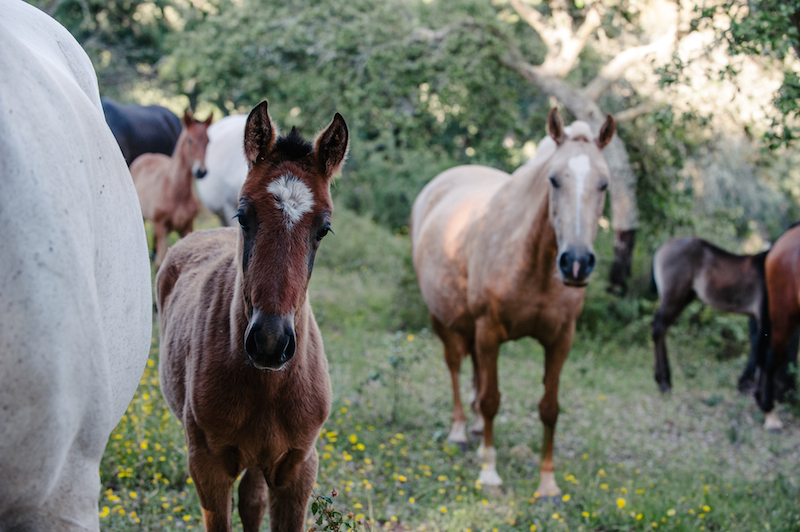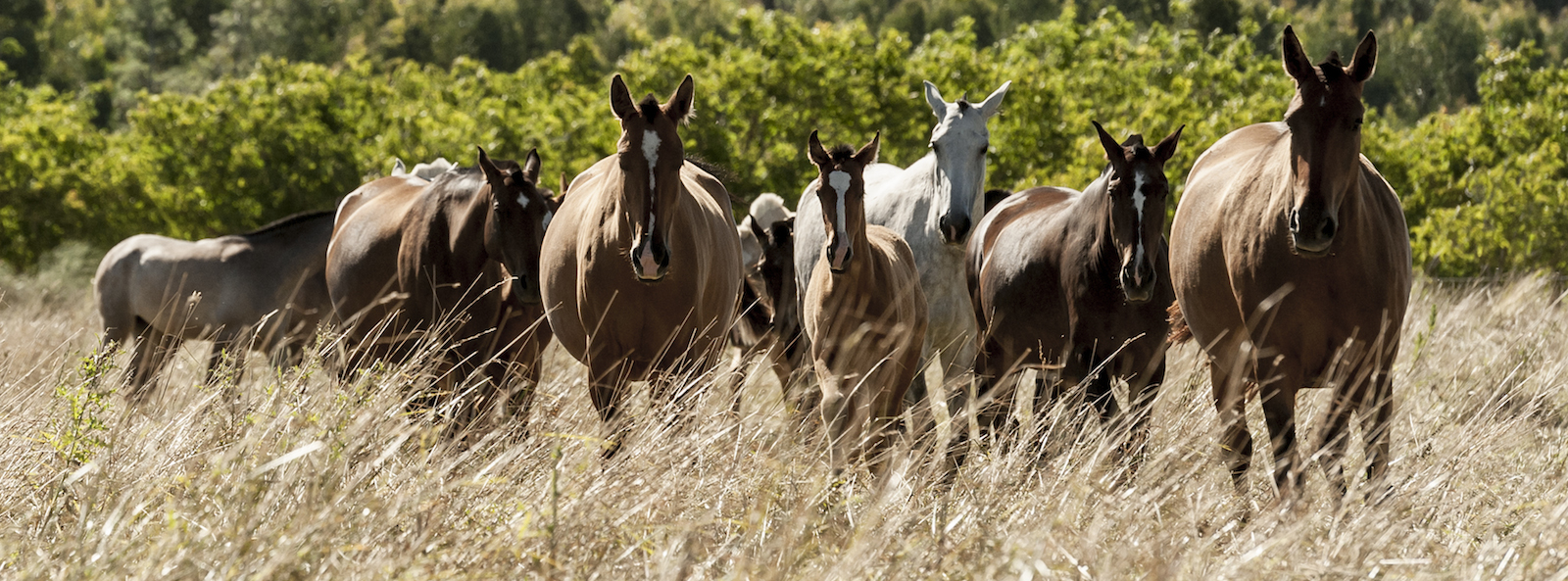Feeding Your Lusitano Part 1 by João Crespo
Going back as far as to the last glacial period, 10.000 years ago, a group of horses was spared at the warmer lower prairies of the Iberian peninsula. Because of the natural isolation this region provided, it preserved the characteristics of these horses throughout thousands of years: the Iberian horses, the ancestors of the Andalusian and the Lusitano Breed.
The Lusitano has thousands of years with a diet low in protein
On the Iberian peninsula their diet was based on dry forages and some grain as a direct consequence of the climate conditions of this area.This created an extremely efficient adaptation of the Iberian horse from a physiologic point of view, based on thousands of years of natural selection.

The Lusitano breed is now becoming immensely popular throughout the world; as leisure horses they have become popular and hugely sought after during the last twenty years and more recently as sport horses, they have accomplished the higher levels of almost all equitation disciplines. The export of the Lusitano breed to different areas of the Globe from México to New Zealand, China to Angola, Brazil to Russia and northern Europe, etc. it is today a reality.
Most of these regions have a totally different climate and as a direct consequence, the type of feed available for animal nutrition is different. As an example, in central Europe, due to more humid weather conditions the use of haylage is a common practice. Compared to straw this forage can contain 6 to 8% more protein. If we recall that forage constitutes the base for a healthy horse feeding regime, we must keep this in mind while choosing from the dozens of different horse feeds available today in the market.
Equine nutrition research is on the rise and horse feeds have evolved
So a new paradigm arises: how to adapt the new feeding regimes in a safe way to a breed that was naturally selected to survive in rough prairies?
The inability to do this has brought us an increasingly high number of growth pathologies in our foals and obesity related problems in our adults, with devastating consequences…
Research and changes in the use of the horses
Until the beginning of the XX century little research was made in the field of domestic animal nutrition. With the decline of the use of horses for transportation it was only recently that science started to focus on this subject. With the increased use of horses for pleasure and leisure purposes, and more recently, the huge expansion of the number and the popularity of various equine-oriented courses at universities throughout the world, there has been an increase in the amount of equine nutrition research being conducted.
Just thirty years ago the average meal for a Lusitano Horse was based on straw and 4 to 6kg of all grain mixture based mainly on oatmeal, (barley, wheat bran), corn, carob and bean mixtures. With the new feeds available nowadays, the amount of concentrate in horse’s diet has been reduced to as little as 2 to 3 kg per day.
Before:
Forages: Mostly dry with low levels of protein (2%);
Concentrates: High levels of protein (15%) and starch but low digestibility. Absence of technological processing.
Today:
Forages: Mostly hay and haylage with higher levels of protein (6 to 11%)
Concentrates: Lower levels of Protein (11%) and (a wider range of starch content in concentrate feed), with high digestibility. High technological processing.
How to feed a Lusitano differs from other breeds
Another important aspect relates to the natural tendency of the ancient Iberian breed for peripheral insulin resistance which can be responsible for serious pathologies like Laminitis. If we keep in mind their past natural selection, Lusitanos had to adapt to low energy feed regimes and long walking distances in search for food. With the concentrates now available for horses, with high digestibility of their starch content, we must be very cautious while (extrapolating) adapting feeding regimes from other autochthonous breeds to the Lusitano Horse.
But new research has brought us lots of solutions for this and nowadays the high level of knowledge on the Lusitano’s nutrition together with the rise of new feeding options, has made the task of giving our Lusitanos a healthy feeding regime much easier!

The increased use of vegetable oils as an alternative to starch as an energy source; beet pulp which is an excellent source of digestible fibre with an energy content somewhere between that of hay and grain, are just a few examples of this.
Modern feeding regimes include high levels of fibre with a balanced protein/ energy ratio intake based on higher levels of vegetable oils and lower starch content.
As a take home message, if you have a Lusitano horse please remember to talk to your Vet or Nutritionist about these issues while establishing the most appropriate feed regime for your horse.
Examples of feeding tables
The tables below are kindly provided by João’s colleague Maria João Baldaia, DVM, equine veterinarian and nutritionist, you find her website here, and are purely meant to function as an example of a feeding program for a Lusitano of 500 kilos that are in moderate work (one hour per day). The data is based on recommendations from the National Research Centre in Kentucky (NRC).
Based on the table A Maria has created this feeding guide for Lusitano of 500 kilos with moderate work. Please note this is purely a guide, a feeding program for your horse is best advised by your veterinarian or nutritionist.
The new technological processing of grain brought a huge increase in the bio availability of nutritional components and because these changes are recent to us, they demand a good knowledge in order for us to take the most advantage for our horses in a safe feeding scenario.


About João Crespo
João Crespo is one of Portugal’s top FEI approved veterinarians that has over 19 years of experience. He has worked with well known veterinarians throughout the world such as Jeffrey Lane in England, Phillipe Benoit in France and Alan Ruggles in USA. João is highly appreciated for his professionalism and enthusiasm in his everyday work and takes holistic approach in his treatments. João has also a degree in chiropractic medicine and at his clinic, outside Porto, Crespovet team provides a wide range of services. You find their website here.



